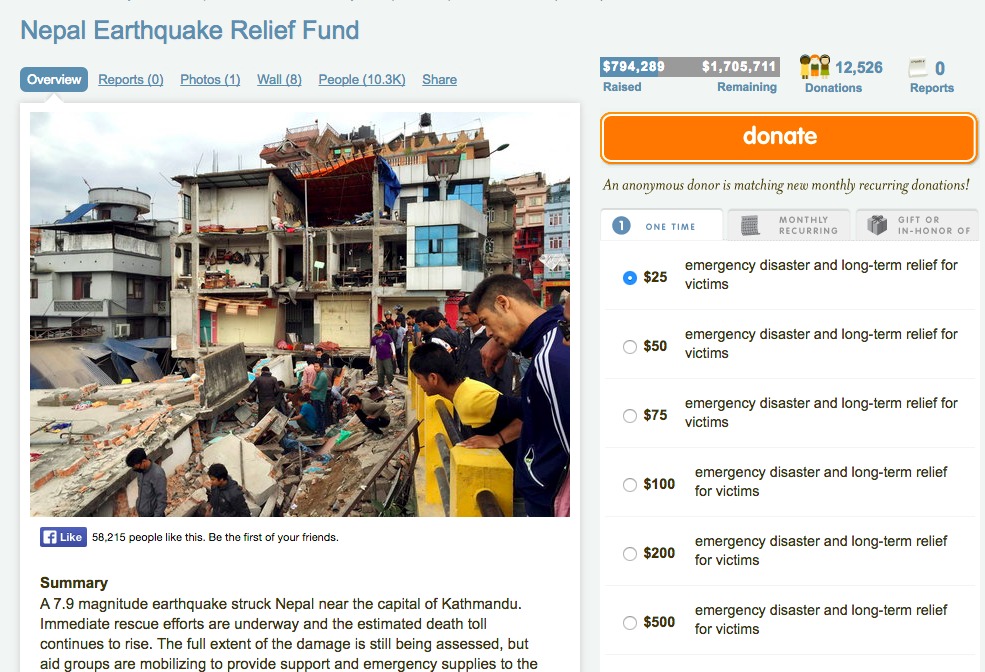The post 5 Ingredients to Make Your Nonprofit-Corporate Partnership Succeed appeared first on Socialbrite.
]]>
A few days ago, I was strolling along the foggy coast in Northern California when I noticed a cormorant flying in “v” formation with a flock of pelicans. A week later, I saw a pelican flying with a flock of cormorants.
I’ve been watching these birds for years and never saw them co-mingle in a flight pattern. I always assumed the same types of birds fly together. It turns out these two species bond in the hunt for food because they can catch more if they work together.
It’s a great metaphor for a corporate-nonprofit partnership. Joining forces with organizations that have resources your organization doesn’t can yield exponential dividends.
As federal funding tightens and corporations take on a larger role in communities, these partnerships are becoming increasingly common — and successful.
“Whether it’s tackling the Muslim ban or protecting green spaces, nonprofits have products and services that many companies realize they need to create a healthy business environment, and to contribute to a world their stakeholders — employees, investors and customers — want to live in,” said Danielle Silber, director of strategic partnerships at American Civil Liberties Union.
Everyone Benefits
Are you with a nonprofit that wants to innovate but doesn’t have the financial cushion to take risks? Maybe you work for a company that wants to deliver services on a small scale to low-income neighborhoods, but don’t have the local understanding to do so.
Each entity has its strengths. A corporation has resources and connections, and a nonprofit has an intimate understanding of a community or issue area. Combined, the company can build a positive reputation showing its support for a cause, and the nonprofit can focus on advancing its mission.
For example, to help solve the problem of children missing school because they don’t have clean clothes to wear, Whirlpool created Whirlpool Care Counts — an initiative to install washers and dryers in schools to see how attendance rates are impacted when students have clean clothes. The pilot program was so successful, with 93 percent of participating students’ attendance increasing in the first year, that Whirlpool is partnering with Teach for America to reach more students across the country.
— an initiative to install washers and dryers in schools to see how attendance rates are impacted when students have clean clothes. The pilot program was so successful, with 93 percent of participating students’ attendance increasing in the first year, that Whirlpool is partnering with Teach for America to reach more students across the country.
The Five Practices of Partnership
If you decide to embark on this kind of partnership, make sure you have senior management buy-in and ample resources to run it. Then, follow these five practices to increase your likelihood of success.
1. A shared vision: What is it that each of you are trying to accomplish? Companies often look to strengthen their brands with customers, shareholders and employees. A clearly articulated social mission helps them do that through their corporate social responsibility efforts. Nonprofits are laser-focused on their social missions such as alleviating poverty, curbing climate change, or providing healthcare, for example. Although companies and nonprofits have different reasons for partnering, both should agree on the partnership’s purpose and outcomes.
The issue the nonprofit is on a mission to solve will determine the perfect intersection for a company and nonprofit to work together. If a healthcare company wants to provide discounted services to low-income neighborhoods, the obvious partner for them is an organization whose mission is to do the same.
Look at Unilever’s partnership with Domestos and UNICEF to deliver clean, safe toilets to millions who don’t have them. In just three years, 6.2 million people received access, helping all three organizations meet their water, sanitation, hygiene and sales goals.
2. Define the partnership: Articulate the division of labor from the outset. Make sure each organization knows who is responsible for what, how decisions will be made, and which organization will lead the project. Appointing individuals will insure each side fulfills their commitments and keeps the train moving.
“Partnership terms are negotiated like any other contract,” said Cheryl Damian, senior vice president of Ketchum Social Purpose. “Not only does it drive accountability, it provides a clear understanding of roles and expectations. Many times it is during this process that organizations unearth hidden gems in terms of assets and expertise that can make the partnership more efficient and productive.”
3. Monitor and evaluate: Measuring progress is often the Achilles heel of any organization. Layer that with figuring out how to align metrics between disparate entities and the climb can seem steep.
Companies and nonprofits have different approaches to metrics. But measurement is critical to the success of the project in order to quickly build on what works, learn from what doesn’t, and keep momentum. A lexicon both partners can agree to, and realistically fulfill, will prevent mission stagnation.
In 2012, Warner Bros. and DC Entertainment (WB) created the We Can Be Heroes campaign to raise funds and awareness for the worst hunger crisis in the Horn of Africa since the ‘90s. Thirteen million people were displaced, and WB wanted to help. So they partnered with International Rescue Committee, MercyCorps, and Save the Children — three organizations equipped to deliver expedient aid to those devastated by the drought. All entities agreed that the best metrics for measuring the campaign’s success were how many people received aid and amount of funds raised. WB hit the two-year campaign goals within six months.
4. Communicate. Like a good marriage, your partnership requires nurturing to be fruitful. Don’t be shy about shaking out the rug if decision-making stalls or the partnership takes a wrong turn. Open dialogue will strengthen your collaboration and lead to better outcomes. So will establishing processes for communicating with your partner, and your internal team. Create a project work plan, schedule weekly check-in calls, and consider using technology like Slack or a project management tool like Teamwork to make collaboration easier.
And don’t forget to communicate partnership successes both internally and externally. Doing so will build excitement for the project throughout both organizations.
5. Flexibility: Remember, each organization has its own culture. Organizations evolve and grow — so must the partnership if you want to have a positive experience. Handle conflict when it arises, and be accommodating.
Creating a partnership can be challenging, but the effort is worth it for organizations and the communities they serve. It doesn’t have to be overwhelming if you take things step by step. If you’re considering a partnership, or are in the midst of one you’d like to reinvigorate, apply these five elements and you’re likely to cultivate strong results.

Jessica Scadron is the founder of Social Harmony, a communications firm that provides strategy and implementation to organizations changing the world. Find her on LinkedIn, Twitter and email.
 This work is licensed under a Creative Commons Attribution 3.0 Unported.
This work is licensed under a Creative Commons Attribution 3.0 Unported.
The post 5 Ingredients to Make Your Nonprofit-Corporate Partnership Succeed appeared first on Socialbrite.
]]>The post Socialbrite Partners with Newly Launched MissionBox appeared first on Socialbrite.
]]>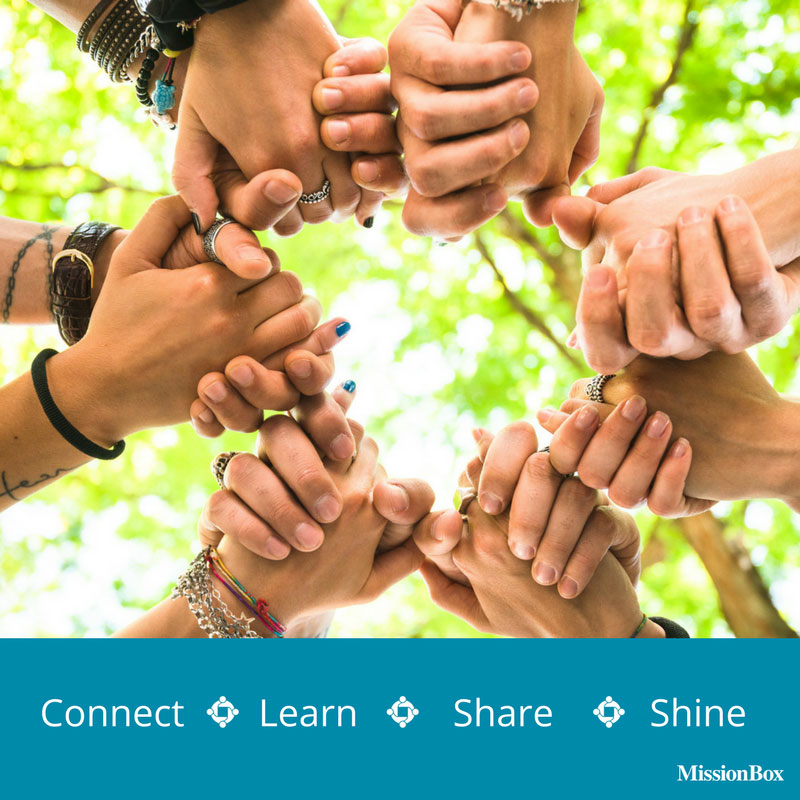
Socialbrite has partnered with MissionBox on their launch today!
MissionBox.com operates on a freemium model and offers many free resources that help nonprofit leaders connect with that perfect peer who is seeking guidance. The goal? Stop “reinventing the wheel”, create a larger sense of community, and together, make a greater impact.
MissionBox provides tools for nonprofits such as:
- Providing access to researched and curated knowledge relevant to nonprofit operations and service delivery, including best practices, articles, case studies and books
- Expanding opportunities to learn and share best practices and advice on a regional or global basis, through relationships or conversations with policy makers, researchers and colleagues
- Facilitating connections with nonprofit professionals, funders, and business community resources around the world and in your own community.
Wishing them a great launch today!
You can learn more about becoming a MissionBox ally by joining here for free.
 This work is licensed under a Creative Commons Attribution 3.0 Unported.
This work is licensed under a Creative Commons Attribution 3.0 Unported.
The post Socialbrite Partners with Newly Launched MissionBox appeared first on Socialbrite.
]]>The post Is Giving Tuesday a Waste of Time? appeared first on Socialbrite.
]]>
By Edgar Rodriguez
Is Giving Tuesday a waste of time? Good question, right?
First of all, the data says it’s been hugely successful in the past. Over 15,000 nonprofits participated last year, raising over $45 million.
Yes, some nonprofits probably raised very little money. But Giving Tuesday is NOT just a 24-hour fundraising campaign. It’s a movement that your supporters are embracing, more and more each year.
How did your nonprofit do last year?
If you participated in Giving Tuesday before, you can look at several metrics to judge your past success.
Depending on your goals, you can look at:
- Total donations ($)
- Number of new donors acquired
- Number of current donors who gave
- Number of new emails acquired
- Number of people who engaged with campaign (clicks, conversions, shares)
- Engagement with follow up messages (email, social, etc)
- You get the idea
So should you participate? I asked a few peers this exact question:

The comments I received are valuable recommendations and pearls of wisdom about Giving Tuesday, broken out into: CONS, PROS, PEARLS OF WISDOM.
Giving Tuesday CONS (WARNINGS)
The one-off, or even one day a year, habit is bad for developing relationships between donors and organizations. If you can’t keep donors’ attention with good communications, a giving day isn’t likely to successfully fill that void, anyway.
I suspect strong organizations, with good fundraising programs already in place, could do well with Giving Tuesday as an addition. They’re ready with a strong message. They’ve got the staff to devote to that one day. And they’ve got systems in place to build on the relationships started with the one day.
Smaller organizations? Unless there’s a strong community-wide awareness of and participation in Giving Tuesday, I wouldn’t recommend putting a year-long program aside in order to participate. It’s a tool, and not every tool is right for every organization.
I’d ask:
- Do you have time for a bootcamp? What will get put aside while you’re doing it?
- What will the results of making that time be? Will they be lasting results?
I wrote about ten reasons a nonprofit should not be on Facebook, and it all boiled down to what your nonprofit can and should do first. (https://dennisfischman.com/ten-reasons-your-nonprofit-should-not-be-on-facebook/)
I feel the same way about Giving Tuesday. IF you already take care of your donors as if they were your best friends, and you want to invite them to a party that you and other nonprofits are throwing, then great! But how many nonprofits are really showing the #donorlove that way?
Giving Tuesday PROS (CHEERLEADING)
PRO:
I think one of the best parts of GivingTuesday are the collaborations and partnerships that are forged because of it. I was working at Trickle Up, a global poverty alleviation organization, when GivingTuesday started and we got to publish a few pieces in the Huffington Post based on HuffPo’s partnership with the GivingTuesday campaign and the NGO alliance group, InterAction. It gives smaller NGOs a chance to be a part of something bigger than them. We also forged partnerships with other orgs we were on GivingTuesday coordination calls with. It’s a win-win all around. @CarolineAvakian
At CauseVox, we have seen the sheer growth of GivingTuesday as the motivating factor to nonprofits trying online fundraising for the first time. By taking part in GivingTuesday, nonprofits learn, in a very short amount of time, how to set impact-based fundraising goals, tell a compelling story, and use social media.
A few case studies from CauseXox:
- Movers & Shakers: National Domestic Violence Hotline’s GivingTuesday Campaign
- Project Renewal Raises Over $77,000 on Giving Tuesday
- Movers & Shakers: Danielle Festa of Grey2k
I was hired last year by a handful of community foundations to teach nonprofits basic communications planning and donor stewardship using both Giving Tuesday and Give Local America as hook. It’s a totally new concepts to at least 75% of orgs in training.
From the Nonprofit Marketing Guide: 5 Ways to Harness the Awesome Fundraising Potential of #GivingTuesday
I think it’s great at getting nonprofits focused on building a real audience – an army! – and communicating with them via social media.
If they’re already focused on the right things, especially building a solid email list, go for it. I love what one of my subscribers did last year for Giving Tuesday.
GivingTuesday is a national day of giving and it gets a TON of media coverage. People search on the hashtag all day long. People that may never have made a donation online give for the first time on that day.
It is not something your org should overlook, or sneeze at! You may not raise millions, but you may get new eyeballs on your cause, new ambassadors to spread the word and best of all – new donors!
GivingTuesday has grown such that nonprofits have an opportunity to embrace it, and leverage the day as part of a well-planned, overall yearly communications, outreach and development strategy.
Giving Tuesday: PEARLS OF WISDOM
Giving Tuesday and other giving days force a nonprofit organization to sharpen and fine tune their message while competing with other organizations.
Most nonprofit organizations have campaigns that last days or months. Keeping donors attention for that long can be tiresome. A giving day campaign condenses your tactics to just 24-hours with immediate results.
Giving Tuesday has grown in popularity, recognition, and success to a point where I don’t think nonprofits can afford to ignore it.
The challenge lies in figuring out how to plug it into the rest of your communications, especially if you are implementing a year-end appeal or annual fund campaign at the same time.
Rather than create a separate Giving Tuesday campaign, I think most orgs should integrate it into their overall calendar. If you are worried that it might take away from other efforts, consider testing a single channel ask–such as a 24-hour match promoted on Facebook or a selfie sharing campaign (giving voice over money) on Instagram.
If you are worried that asking for money on this day can hurt other efforts, ask for something else. Use Giving Tuesday to ask for time, passion, activism, and other efforts that might engage your donors beyond giving money.
A successful Giving Tuesday campaign depends on:
- How much the nonprofit has already adopted these kinds of tactics and technologies (how valuable is learning/training?)
- How well it aligns with their existing strategies and programs.
- How well they can segment and steward their constituents to make sure to ask the right constituents to join them in GivingTuesday in the right ways.
Practice working together as online communications, online fundraising, and major gifts teams. What happens if a major prospect gives to Giving Tuesday or comments on a post? Does your team know how to work together?
Taking part in a broader effort can bring new attention to your nonprofit, whether through donations, education or simple awareness. The messaging around national, state or regional giving is also quite inspiring, and confirms the power of philanthropy by amplifying giving on a single day to maximize quantifiable impact.
Where the sector needs to focus, in my opinion, is on maintaining the momentum AND further developing ongoing communication strategies that respect how donors would like to receive information after taking part in such an initiative.
The Takeaway
Giving Tuesday, like any campaign, is much more successful if you do your homework.
If you’re community isn’t as engaged as you like, maybe Giving Tuesday can be a catalyst to build a stronger community. Success largely depends on how well you plan, your definition of successful participation, and what investment (and sacrifices) you’ll need to make.
Check out these related articles:
 This work is licensed under a Creative Commons Attribution 3.0 Unported.
This work is licensed under a Creative Commons Attribution 3.0 Unported.
The post Is Giving Tuesday a Waste of Time? appeared first on Socialbrite.
]]>The post Honesty Oscars: Best Activist in a Leading Role appeared first on Socialbrite.
]]>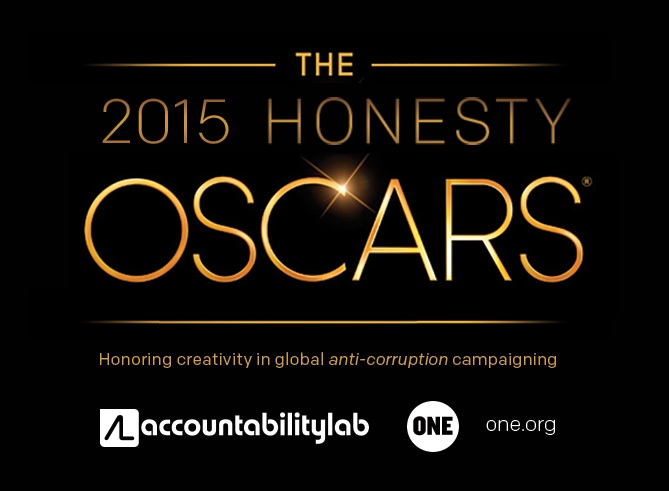
By Danielle Daley
My friends over at the Accountability Lab and the ONE campaign are hosting the Honesty Oscars. Every day in the week leading up to the Academy Awards, February 17th to 21st, ONE and Accountability Lab will unveil a category for the Honesty Oscars 2015, an award that honors not Hollywood films, but the creative work of activists and organizations that fight global corruption. Vote for your favorites, and they’ll announce the winners following the Oscars on Monday, February 23rd.
We think it’s great that they’ve hijacked the Oscars in the friendliest and most humanitarian way possible by shining the spotlight on the people and projects that rarely get it.
Please go cast your vote here and consider yourselves a member of the Honesty Oscars Academy!
 This work is licensed under a Creative Commons Attribution 3.0 Unported.
This work is licensed under a Creative Commons Attribution 3.0 Unported.
The post Honesty Oscars: Best Activist in a Leading Role appeared first on Socialbrite.
]]>The post HatchforGood.org helps nonprofits tell their stories appeared first on Socialbrite.
]]>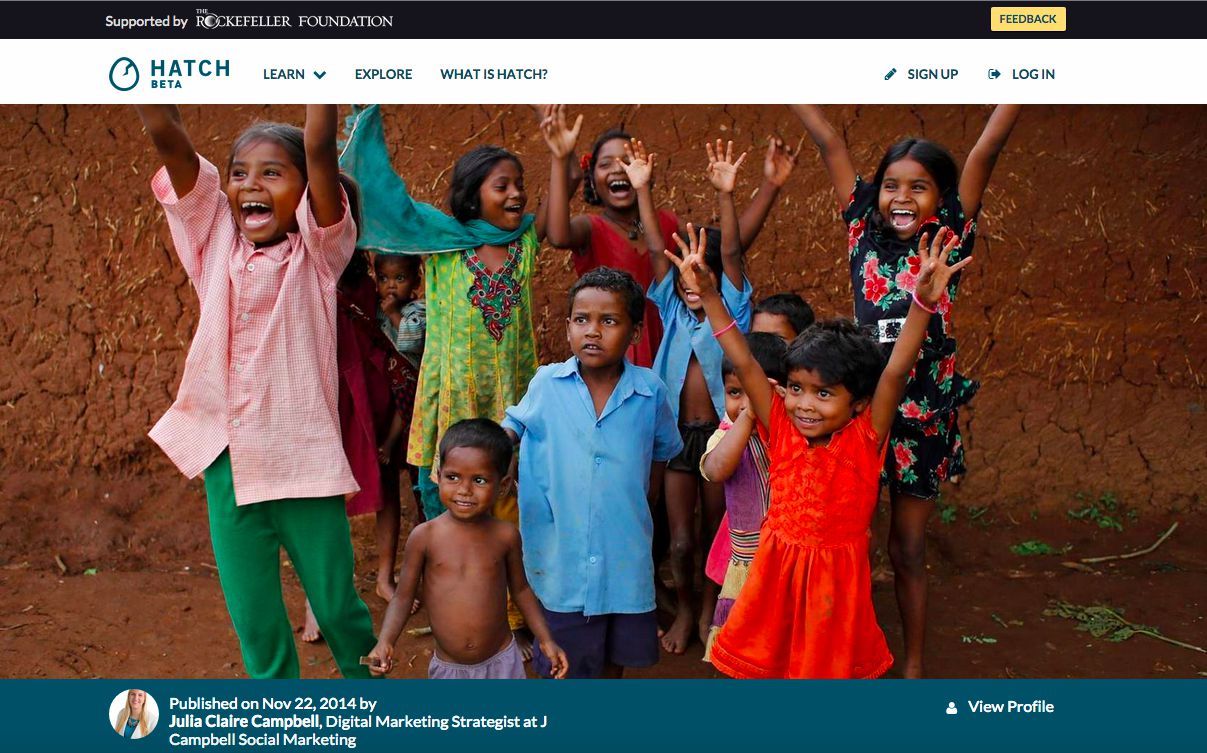

This past Tuesday, I attended the Social Media for Nonprofits Conference in NYC. There’s always great content and discoveries to be made at the #SM4NP Conferences. They tour around the country and are focused on providing great content and practical, tactical workshops and tools that nonprofits can put to work the next day. Full disclosure: I’m on their Leadership Council but I still know a good conference when I see one.
One of my favorite presentations came from Jereme Bivins and Jay Geneske from the Rockefeller Foundation. They were presenting one of their latest projects: HatchforGood.org. I had known about HatchforGood for a little while now but hadn’t given it a deep dive yet, so I was super excited to get this in-person primer at the conference.
Well, it’s really pretty great and it’s free. As the site tells us, Hatch acts like a concierge, connecting you to a suite of tools and a growing community to help you leverage storytelling to drive social impact and improve the lives of the poor and vulnerable around the world. The concept being that nonprofit’s stories don’t just materialize—they’re strategically planned, they’re creatively crafted, and they’re designed to achieve measurable outcomes.
Hatch has five sections, each designed to help you strategically craft, curate and share stories to drive social impact. As you answer questions, you are provided with suggested tools, case studies and resources that are customized to your needs. These recommendations will always be saved to your profile so you can access them later.
As you build your storytelling profile, you can explore case studies, look for ideas from storytelling thought leaders and even contribute your own. These resources can also be saved to your profile for later use.
Perhaps one of my favorite parts of Hatch is that it has an ‘Evaluation’ section, which helps you measure the effectiveness and impact of your work. That’s great news for data-driven organizations and an impetus for those who struggle with metrics to wrap their heads around the impact of storytelling.
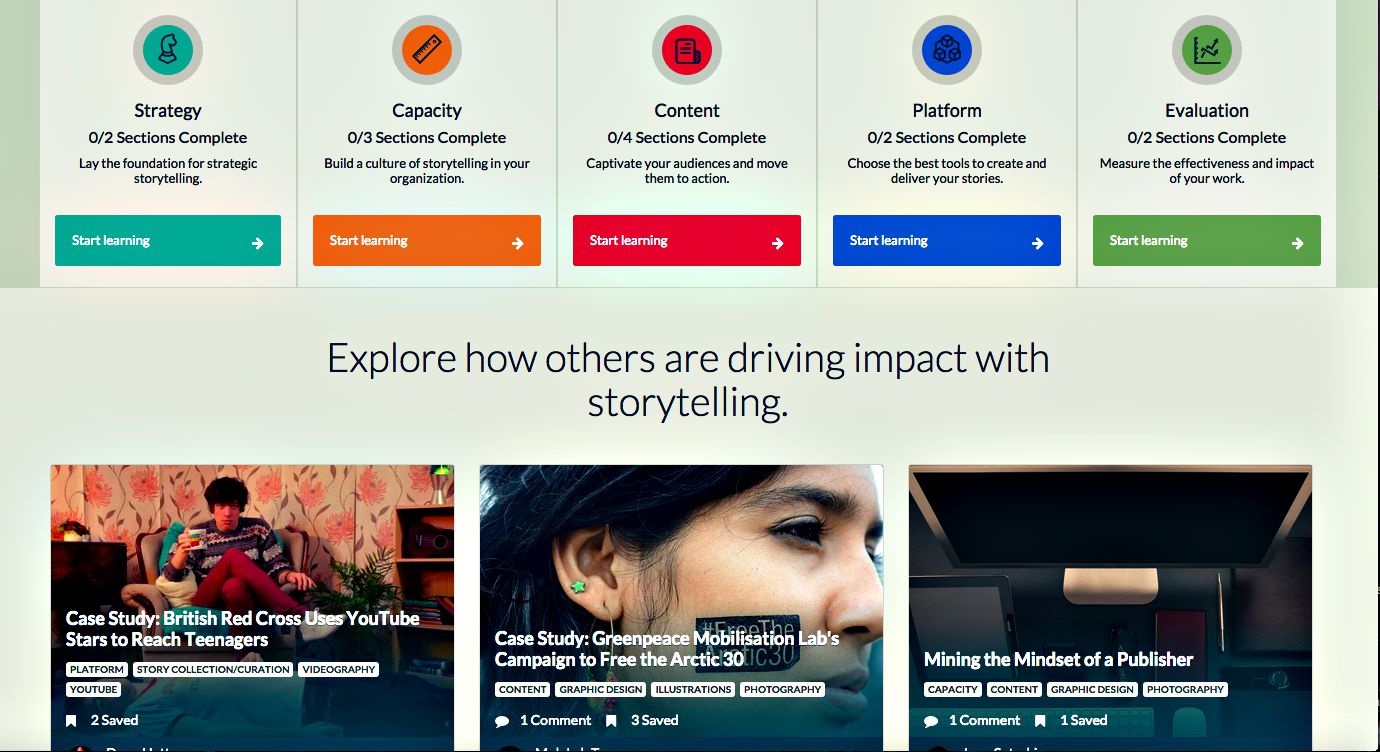
Great storytelling tools that make us smarter as organizations don’t come around often so go ahead, sign up and see how others are telling stories. It may inspire you to explore new ways of telling yours.
Hatch is currently in Beta. You can learn more at HatchforGood.org
 This work is licensed under a Creative Commons Attribution 3.0 Unported.
This work is licensed under a Creative Commons Attribution 3.0 Unported.
The post HatchforGood.org helps nonprofits tell their stories appeared first on Socialbrite.
]]>The post Nonprofit Case Study: Periscope for Nonprofits appeared first on Socialbrite.
]]>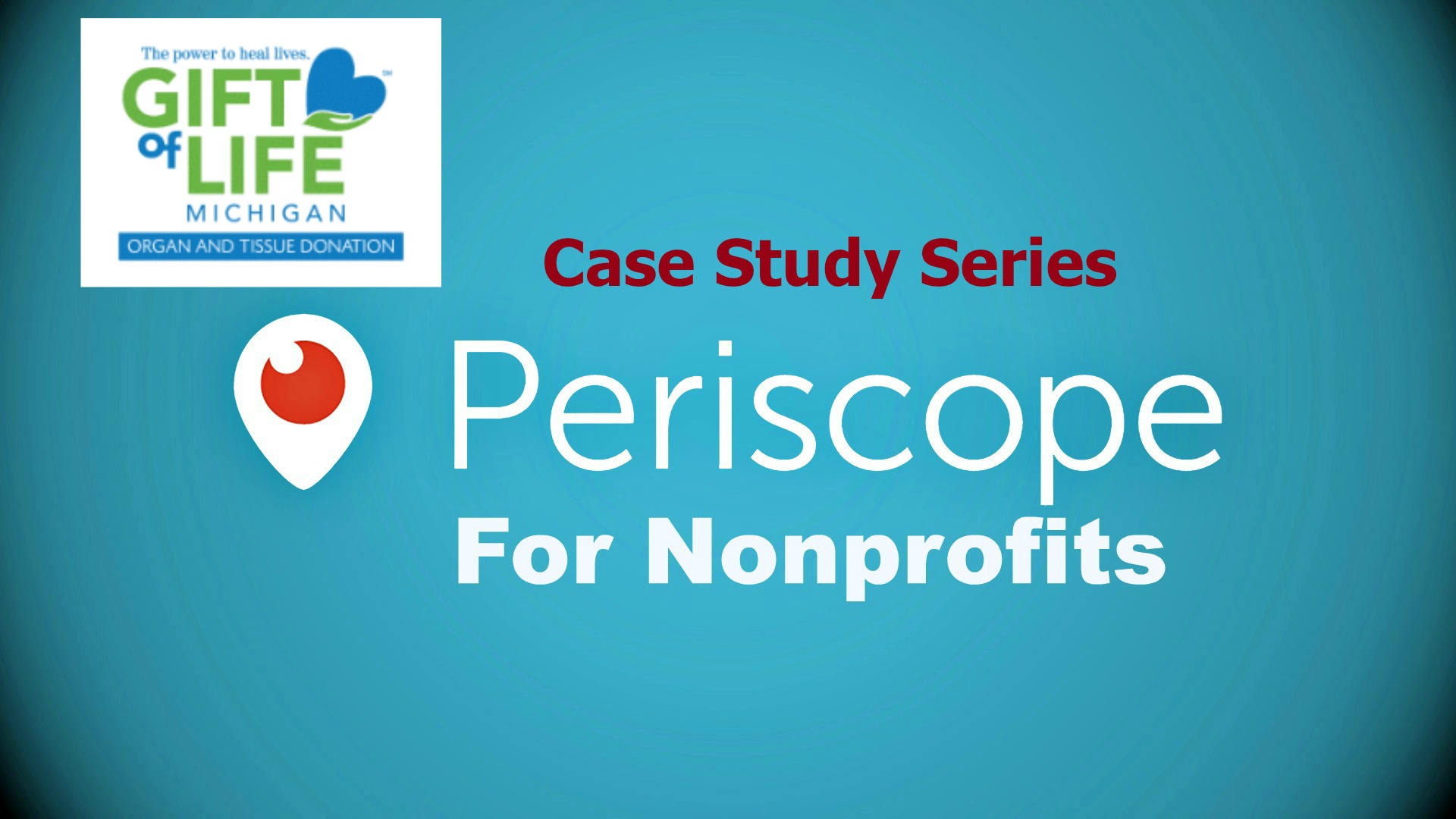
 As a follow-up to my Periscope for Nonprofits Quick Guide, I wanted to focus on real Nonprofit Periscopers, and how they’re using this new tool for social good.
As a follow-up to my Periscope for Nonprofits Quick Guide, I wanted to focus on real Nonprofit Periscopers, and how they’re using this new tool for social good.
Today, I’m featuring Jennifer Tislerics, the Special Events & Partnerships Coordinator for Gift of Life Michigan. Gift of Life Michigan coordinates organ and tissue donations from deceased donors for the state. Jennifer also handles social media, youth outreach, faith-based programs, workplace outreach, and more.
As a refresher, Periscope is a three month-old, free mobile app that allows any user to live stream from wherever they are. Jennifer bravely responded to our call out for ‘Nonprofit Periscopers’ and she had a lot of great advice to offer in our Q & A.
1) What made you want to try out Periscope? Was it a strategic move as part of a larger social strategy, or did you want to experiment with the app first to see if it would work for your nonprofit?
 I saw the Michigan Secretary of State staff using Periscope at a press conference during National Donate Life Month in April. (In Michigan our Secretary of State oversees the DMV, and helps coordinate the state’s organ donor registry.) It seemed like an easy way to engage a broader audience in an event. I watched a few other broadcasts on the iPad and was intrigued by the possibilities to engage distant supporters in real-time. I decided to experiment with it a bit, to see how it might benefit our organization and cause.
I saw the Michigan Secretary of State staff using Periscope at a press conference during National Donate Life Month in April. (In Michigan our Secretary of State oversees the DMV, and helps coordinate the state’s organ donor registry.) It seemed like an easy way to engage a broader audience in an event. I watched a few other broadcasts on the iPad and was intrigued by the possibilities to engage distant supporters in real-time. I decided to experiment with it a bit, to see how it might benefit our organization and cause.
2) What event did you use Periscope for?
In late April I used Periscope at a kick-off breakfast event for an annual walk/run event. I plan to use it again at the actual walk/run in late July.
3) What was the experience like? Did you get good feedback from users? Take us through your steps.
It was a rough start, actually. One of the biggest lessons I learned is to use a tripod and get up close to the action – do not carry the iPad around or video from the back of the room. At least not at a seated event – I will probably move around some at the walk/run event. I accidentally stopped the video early (bad finger placement holding the iPad), so had to start fresh with a new video, which our Twitter followers may not have found. Actually, I did a few shorter-than-intended videos. The ones with the most audience traffic had short but interesting titles, which made our video stand out from the crowd.
4) What was engagement like?
Not nearly as many people watched the videos as I had hoped, but it was early on a work-day morning. It was fun to see people in the real-life audience following on Periscope, too, and sending us hearts and positive comments!
5) What did you learn? Any tips to share?
Practice first! Practice on-site. Make sure you’ve got a solid internet connection. Use a tripod. Prepare a few people to talk to you on video beforehand. Promote it in advance so people know to follow you on Twitter to get the link (and any new links you may create after accidentally cutting the video short).
6) What worked and what didn’t? What would you like to see improved?
I wish we could “add on” or continue a previous video, rather than having to create a new one if we accidentally stop the first video. It’s tough typing in a new title in a hurry, trying to rush and get online again. In general, I think Periscope viewers prefer interactive videos rather than “broadcasts” of speeches, although when we video’d a Michigan Supreme Court Justice speaking that got some audience attention!
7) Would you use Periscope again?
Definitely! I plan to at our walk/run on July 25 in Detroit.
8) Did you download the broadcast?
No, I didn’t feel I got a high enough quality video to make that worthwhile. This time.
9) Do you see yourself adding it to your social media strategy?
Yes, if these first few experiences prove successful, or at least promising, we will incorporate it into our strategy.
10) Anything else you want to tell me that I didn’t ask?
Follow @giftoflifemich on Twitter the morning of Saturday, July 25 to get links to our Periscope video(s) and send me feedback! I’m always open to suggestions for improvement.
We will definitely do that, Jennifer, and we’ll send you tons of Periscope hearts for all the great work you are doing at Gift of Life Michigan! Thank you for sharing your Periscope experience with us.

Photo courtesy of Gift of Life Michigan
PS – I will be featuring nonprofits and NGOs using Periscope on this blog, so please let me know in the comments below of any npos you know that are using Periscope to engage their supporters.
 This work is licensed under a Creative Commons Attribution 3.0 Unported.
This work is licensed under a Creative Commons Attribution 3.0 Unported.
The post Nonprofit Case Study: Periscope for Nonprofits appeared first on Socialbrite.
]]>The post How social media platforms are responding to the Nepal earthquake, and how you can help appeared first on Socialbrite.
]]>

By Caroline Avakian / Photo above courtesy of Facebook
It was just a few hours after I found out about the devastating Nepal earthquake that I noticed an alert on my Facebook feed that I hadn’t seen before. My colleague who works in Nepal had been marked “Safe” in Facebook’s new “Safety Check” feature, that instantly let me know how many of my Facebook friends were in the “affected area”, how many had been “marked safe”, and also allowed me to mark myself safe in the event I was in the “affected area”.
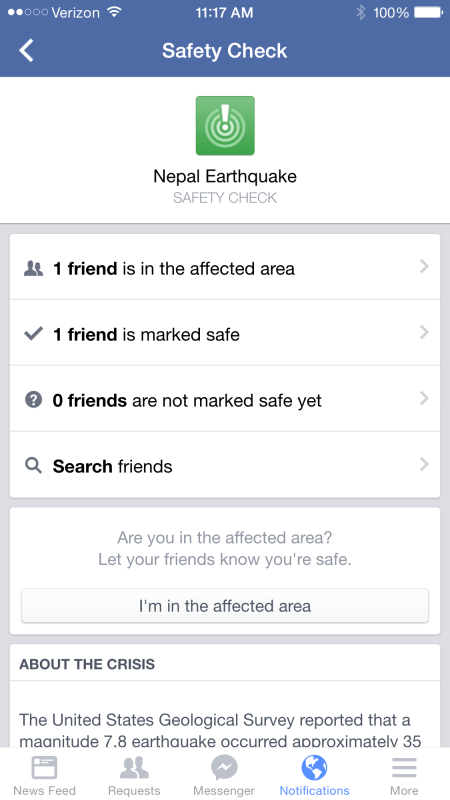
The Safety Check feature was quickly followed up by a “Donate” feature, so if you log into Facebook today, you’ll notice a message at the top of your news feed that lets you donate to International Medical Corps, a humanitarian organization Facebook has partnered with to provide emergency aid. Facebook is also providing matching funds of up to two million to provide immediate and ongoing relief. The IMCs emergency response teams are operating mobile medical units in Nepal, India and Bangladesh, to deliver critically needed medical care and medicines to the regions hardest-hit by the earthquake. They’re distributing hygiene kits, water purification tablets and other supplies to the most devastated areas.
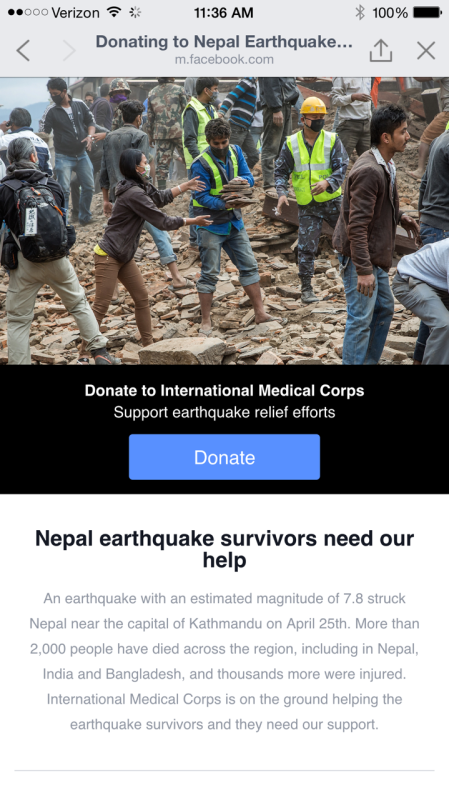
Additionally,Twitter is helping to raise funds through UNICEF and Apple is asking iTunes users to donate money to the American Red Cross via its iTunes store. The appeal from Apple allows donations from $5 to $200, with 100% of the funds donated being passed anonymously to the Red Cross.
Similarly to Facebook, Google is now providing satellite imagery to aid in the recovery, and has launched a Person Finder to help people know whether or not people are safe who might have been in the earthquake affected areas.

The Person Finder tool is an online database that collates information from emergency responders, and allows individuals to post details about people who have been missing or are found. Additionally, Google.org is donating one million to the emergency response efforts and a gift-matching option will soon be available.
WHAT YOU CAN DO
The organizations linked above are all doing excellent work in the affected regions, and for those of you who are interested in donating to locally-based organizations, Global Giving (seen in photo above), has compiled a vetted list of community-based organizations that are in the best position to provide long-term support for disaster victims. By funding the relief efforts of local organizations, donations to the Global Giving fund have the potential to build stronger disaster-response capacity, so that these organizations are better equipped to face future disasters. GlobalGiving promises to post reports about how funds have been used and will email these reports to donors and subscribers. A wonderful giving choice if you haven’t made a donation yet. Just click the photo above to go straight to that donate page.
 This work is licensed under a Creative Commons Attribution 3.0 Unported.
This work is licensed under a Creative Commons Attribution 3.0 Unported.
The post How social media platforms are responding to the Nepal earthquake, and how you can help appeared first on Socialbrite.
]]>The post 5 Communications Lessons Learned Working at an Anti-Poverty Nonprofit appeared first on Socialbrite.
]]>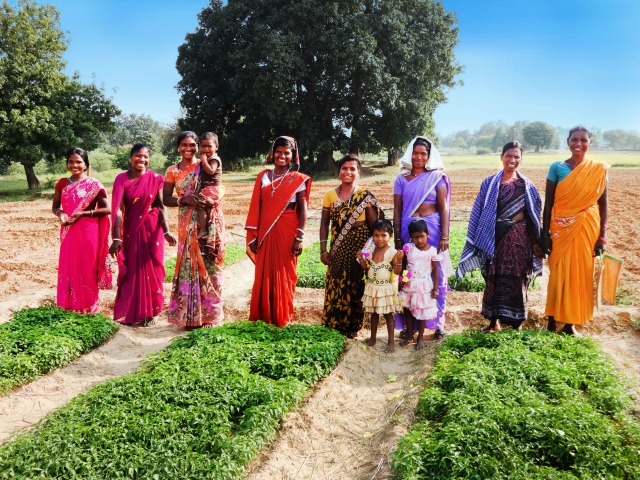
This post was originally published in the Huffington Post. Photo courtesy of Trickle Up.
By: Caroline Avakian
The United Nations Millennium Development Goals (MDGs) are the world’s targets for addressing extreme poverty in its many dimensions. The MDGs target date expires this year, and as we collaboratively build out new goals for the next 15 years, it will be critical that nonprofit communicators in the global development sector build on what we’ve learned as well. So it got me thinking about what some of my lessons learned were after almost five years working at Trickle Up — an international organization that empowers people living on less than $1.25 a day to take the first steps out of poverty, providing them with resources to build sustainable livelihoods for a better quality of life.
Trickle Up is a small but dynamic organization that serves people at the very bottom of the socioeconomic ladder. Founded in 1979, they have a long history of serving the poorest, a population that until recently had been ignored by governments and even many other poverty alleviation organizations. When I came to work for Trickle Up in 2008, as their Director of Communications, like any communications staffer, I was tasked to expand our message, our audiences and media opportunities.
Looking back on what the greatest returns were for our effort, I’ve made a list of the five communications tactics that helped us grow our communications as well as our organization in the almost five years I worked at Trickle Up.
1. Stay on message and repeat, repeat, repeat.
Whether it was at a conference, at the UN, or one-on-one, when anyone asked about Trickle Up, I was always sure to address that we worked exclusively with the ultra poor — people living on less than $1.25 per day. There was something powerful and memorable about the consistency and repetitiveness of, “Are you working with the ultra poor”, “Is this project also targeting the ultra poor?”, “What can we do to make sure that the ultra poor are represented in this conversation?”, that became key to keeping our beneficiaries in the forefront and made our participation more effective.
2. Twitter can help build communications partnerships that can grow a smaller organization’s voice.
Committing ourselves to tweeting more strategically and targeting influencers, policy makers and mainstream media outlets, helped us raise awareness on global poverty and the ultra poor, and led to media partnerships like one with Huffington Post Impact, that helped bring our message into the mainstream.
3. Flashy websites are great but make sure you’re also educating.
Everyone likes a beautifully designed website but make sure you’re also doing your part to educate your audience on the issues your organization tackles. When I launched Trickle Up’s revamped website in 2010, we had added an “Understanding Poverty” section front and center to make sure it was visible and not just secondary to our own programs. One piece of feedback that we heard consistently was that the website not only looked great but was also deeply informative. Educating people on the nuances of poverty was a main communications goal, and our website served as a resource and reference for many looking for information on people living on less than $1.25 per day.
4. Blogging and content sharing is key to growing your audience.
Once we started growing our blog and sharing our content with other organizations looking to publish similar content, we grew our readership exponentially. Sometimes we made the decision not to publish a blog post on our website blog, but rather on a partner site or media site that publishes interesting global development content. It was always worth the extra effort and introduced our organization to many new audiences and other organizations.
5. Growing your peer network is critical to your success.
Some nonprofit organizations view their peers as competitors and don’t engage them as much as they could. When I came to Trickle Up, I knew that I wanted to expand our communications strategy to more actively engage our peers in our work. There are many ways to do that from a communications standpoint and make it interesting — a blogging series with three different poverty alleviation organizations writing from their viewpoints, a tweetathon, or even just attending each other’s events. You are not only growing your organization but taking your supporters on a more interesting, robust journey that ultimately engages them more effectively.
What’s Next: Expanding our Global Communications Strategy
The United Nations Millennium Development Goals are the world’s targets for addressing poverty, hunger, disease, lack of adequate shelter, and exclusion — while promoting gender equality, education, and environmental sustainability. It provides a road map for how all countries could collaborate on the future of development and the ending of extreme poverty. That agreement, however, expires this year. As we build out new goals for the next 15 years, it will be critical that the targets benefit all people living in poverty. Equally important is that we ensure that we continue to improve on policies that enable their success and that keep governments accountable.
With that in mind, global development communications will now have an even greater task of engaging audiences in the important work ahead. Just as the MDG’s are sustained through country partnerships and collaboration, the same could be said for strengthening and revitalizing our communications partnerships in organizations of all sizes and budgets, to ensure clarity, unity and power of messaging.
 This work is licensed under a Creative Commons Attribution 3.0 Unported.
This work is licensed under a Creative Commons Attribution 3.0 Unported.
The post 5 Communications Lessons Learned Working at an Anti-Poverty Nonprofit appeared first on Socialbrite.
]]>The post The power of vulnerability on our social communities appeared first on Socialbrite.
]]>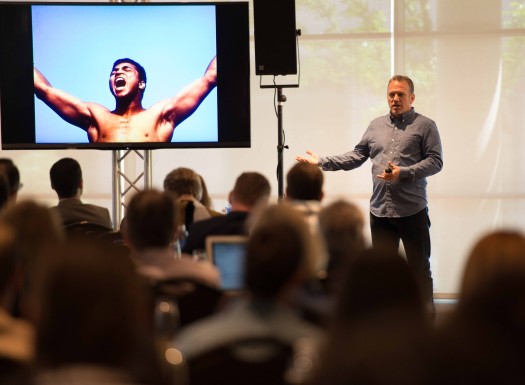
Thoughts from Erwin Penland’s Food For Thought Conference (photo of Scott MacEachern by Amy Randall/Erwin Penland)
Target audience: Nonprofits, cause organizations, foundations, NGOs, social enterprises, marketers, managers, general public.
 We talk a lot about the newest ways to connect with our supporters and donors, all the latest digital marketing trends and apps that are aimed to engage, build community and inspire. But one of the things we don’t talk about that much is vulnerability and the inherent power that it has over getting a story to stick and helping to build trust, loyalty and openness in our digital communities.
We talk a lot about the newest ways to connect with our supporters and donors, all the latest digital marketing trends and apps that are aimed to engage, build community and inspire. But one of the things we don’t talk about that much is vulnerability and the inherent power that it has over getting a story to stick and helping to build trust, loyalty and openness in our digital communities.
I recently attended Erwin Penland’s seventh annual Food For Thought conference in Greenville, South Carolina. Food for Thought is an “unconventional convention” that celebrates the intersection of creative thinking, digital marketing, entrepreneurialism, social responsibility and food. The three-day conference brings together some of the country’s leading entrepreneurs, innovators, thought leaders and chefs.
One of the things that really stuck with me is how many of the presenters courageously shared personal and professional stories, and came from a place of deep vulnerability in front of their audience. It was arresting, surprising and deeply engaging. You could hear a pin drop during many of the presentations. Not your typical plenary, to be sure. I couldn’t stop thinking about these presenters and their stories; their stories somehow became my stories. It made me want to learn more about them and share what I had learned with others.
How to build trust and engagement in our online communities
The stories these speakers shared, from Catherine Hoke, founder and CEO of the nonprofit Defy Ventures, who shared not only redemption stories of the formerly incarcerated beneficiaries her organization helps, but also her own stunning tale of loss and redemption – to Scott MacEachern, the creative force behind the LIVESTRONG brand, who shared not only the remarkable trajectory of that campaign, but his own personal and professional journey of loss and betrayal when much of the LIVESTRONG brand was called into question.
These speakers were raw, emotional and brazenly honest, and it got me thinking – how do we bring that level of vulnerability into our storytelling and into how we build trust and engagement in our online communities? How can we dare ourselves to be more transparent, more courageous, and therefore, more memorable? I think often we feel we need to be fun, serious, teach, share – and we should – but what if we brought in more vulnerability and honesty to our work? What effect would that have on your relationships with your supporters?
Well, it certainly gave me a lot to think about this week. Here are five potential ways you can bring more of that vulnerability into your work:
1Sharing your organization’s wins and triumphs is super important, but building a strong community foundation built on trust means you share your wins and some of your struggles or losses. How can we challenge ourselves to be more transparent? We gain respect and increased support when we share our struggles with our real life networks. Social media community engagement is no different.
2Ask your community for what you need in a humble and honest way – you’ll probably be surprised by the response.
3Ask for feedback from your community. Open yourself to getting deeper, more meaningful feedback from your supporters. What do you really want to know about your community? Challenge yourself to ask more meaningful questions.
4Introduce your team! This one seems like a no-brainer but we often don’t do it. Introduce your staff, volunteers and board. Throw up a fun photo or two of them. Interview them on why they’re passionate about what they do.
5What if at the end of the year, along with our impact and annual reports, we included a list of things we wanted to achieve but fell short on? Do you think we’d get dinged, or potentially open ourselves to the opportunity of being supported and funded on the things we couldn’t get traction on? That’s my “vulnerability challenge” to you.
Any other ways you can think of to add openness and vulnerability to your work?
 This work is licensed under a Creative Commons Attribution-NonCommercial 3.0 Unported.
This work is licensed under a Creative Commons Attribution-NonCommercial 3.0 Unported.
The post The power of vulnerability on our social communities appeared first on Socialbrite.
]]>The post SourceRise: Connecting nonprofits/NGOs to journalists appeared first on Socialbrite.
]]>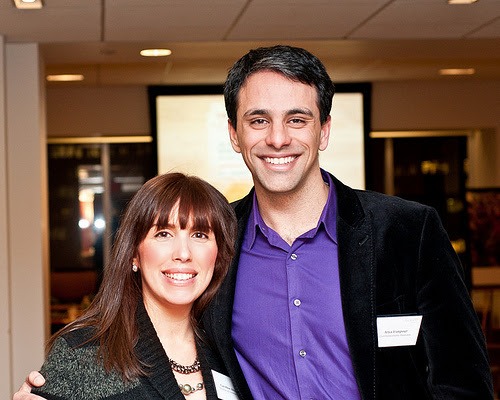
Caroline Avakian, SourceRise founder & CEO, with Arya Iranpour, Chief Technology Officer and founding engineer (Photo by Maulin Mehta)
Target audience: Nonprofits, cause organizations, foundations, NGOs, social enterprises, journalists, educators, general public.
 While a number of promising Web 2.0 social enterprises have launched in the past few years, SourceRise, which just soft launched in beta last week, is showing great momentum right out of the gate. SourceRise, founded by our very own Caroline Avakian (managing partner at Socialbrite), connects journalists and bloggers to sources at international NGOs and nonprofits in an effort to diversify the voices represented in the news and to increase the number of well researched, compelling development and foreign news stories in traditional media.
While a number of promising Web 2.0 social enterprises have launched in the past few years, SourceRise, which just soft launched in beta last week, is showing great momentum right out of the gate. SourceRise, founded by our very own Caroline Avakian (managing partner at Socialbrite), connects journalists and bloggers to sources at international NGOs and nonprofits in an effort to diversify the voices represented in the news and to increase the number of well researched, compelling development and foreign news stories in traditional media.
Last week I interviewed Caroline to find out more about SourceRise and how it’s building bridges between the media and nonprofit sources.
SourceRise is a social enterprise that directly connects journalists to sources at international NGOs and nonprofits. In a time when international news gathering budgets are shrinking at record rates, it is becoming more difficult for major news outlets to independently cover international and development news stories. Via a network of journalists and expert global NGO sources, SourceRise enables development foreign news reporting rooted in real time, accuracy, and deep context
SourceRise is a social enterprise that directly connects journalists to sources at international NGOs and nonprofits. In a time when international news gathering budgets are shrinking at record rates, it is becoming more difficult for major news outlets to independently cover international and development news stories. Via a network of journalists and expert global NGO sources, SourceRise enables development foreign news reporting rooted in real time, accuracy, and deep context.
We connect journalists and nonprofits by sending out source request emails from journalists to sources, and by facilitating digital media briefings on breaking global hot topics or humanitarian crises. SourceRise also holds media call-to-actions around global issues that aren’t getting the media coverage they deserve, by connecting journalists and bloggers to sources who can immediately provide information and context around important issues. In addition, SourceRise matches journalists, photojournalists and other media makers with NGOs able to host them in the areas of the world they want to report on.
A couple of years ago, when I actually started telling people about my budding idea that would eventually became SourceRise, colleagues would tell me, “Yeah, nice idea but aren’t there already development news sites writing about these stories?” I realized that when people free-associate on “foreign” or “development news,” there’s an underlying assumption that it should live on a separate news site, that there’s no place or desire for it in mainstream news. Interestingly, we know that’s not the case. Data shows us that people actually want more international news brought to them on the news channels and sites they’re already watching and reading. It became very apparent to me that there is a perception and language disconnect when we speak about development or foreign news. That disconnect fuels my efforts to mainstream SourceRise and change the way we view and create news.
SourceRise is different in that our focus is on development news reporting, something that other reporter/source connector sites don’t focus on. At a time when foreign news desks are shutting down due to budget constraints, our mission as a social enterprise is to solve that problem by helping journalists connect easily to vetted expert sources they can trust and quote in their pieces, which ultimately provides better, more contextualized development and foreign news coverage.
Mainstream media and NGOs have had a longstanding relationship. Journalists often reach out to NGO expert sources for access to remote parts of the world — they rely on them for quotes, to provide context to political, social and cultural issues on the ground, to give them info and statistics they can reference in their stories. Currently, we are seeing a huge shift in the international reporting landscape that has led to the shut down of many foreign bureaus of even major news outlets. This has led to many NGOs and nonprofits researching and pitching their own stories, sharing sources and analysis and even providing travel logistics, guides and housing to reporters. In short, without the help of NGOs, many foreign news stories would never be told. SourceRise is the result and the logical next step to advancing this mutually beneficial relationship.
A recent survey by MPO Research Group found that American media are missing the mark when it comes to providing international coverage to the public. When MPO asked respondents what they think about the coverage of international news, over half said there should be more of it and just over a quarter think it’s fine just as it is, indicating that there’s a lot of room for improvement from our media outlets.
The bottom line is, we look at the Internet and think we have this wide view of the world, when in fact we’re not really as connected as we think we are. In the 1970s US global news was about 35-45% of the mainstream media we consumed. Now, it’s about 12-15%. Development and foreign news have been relegated to “special” news sites. You have to go searching for that news, because you’re not really going to find much of it on the sites you’re likely already reading. So, we’ve slowly adapted to that shift through the years. I think that’s really problematic on many levels. The real problems of the world we need to solve are global in scale, that require global conversations to get to global solutions. We’re nowhere near that right now.
SourceRise is currently in beta and a social good startup to keep an eye on!
• Sign up on the SourceRise website
• Nonprofits/NGOs can sign up directly here
• Journalists and bloggers can sign up directly here
• Follow SourceRise founder Caroline Avakian on Twitter
• Follow SourceRise on Twitter
• Fan SourceRise on Facebook
 This work is licensed under a Creative Commons Attribution 3.0 Unported.
This work is licensed under a Creative Commons Attribution 3.0 Unported.
The post SourceRise: Connecting nonprofits/NGOs to journalists appeared first on Socialbrite.
]]>